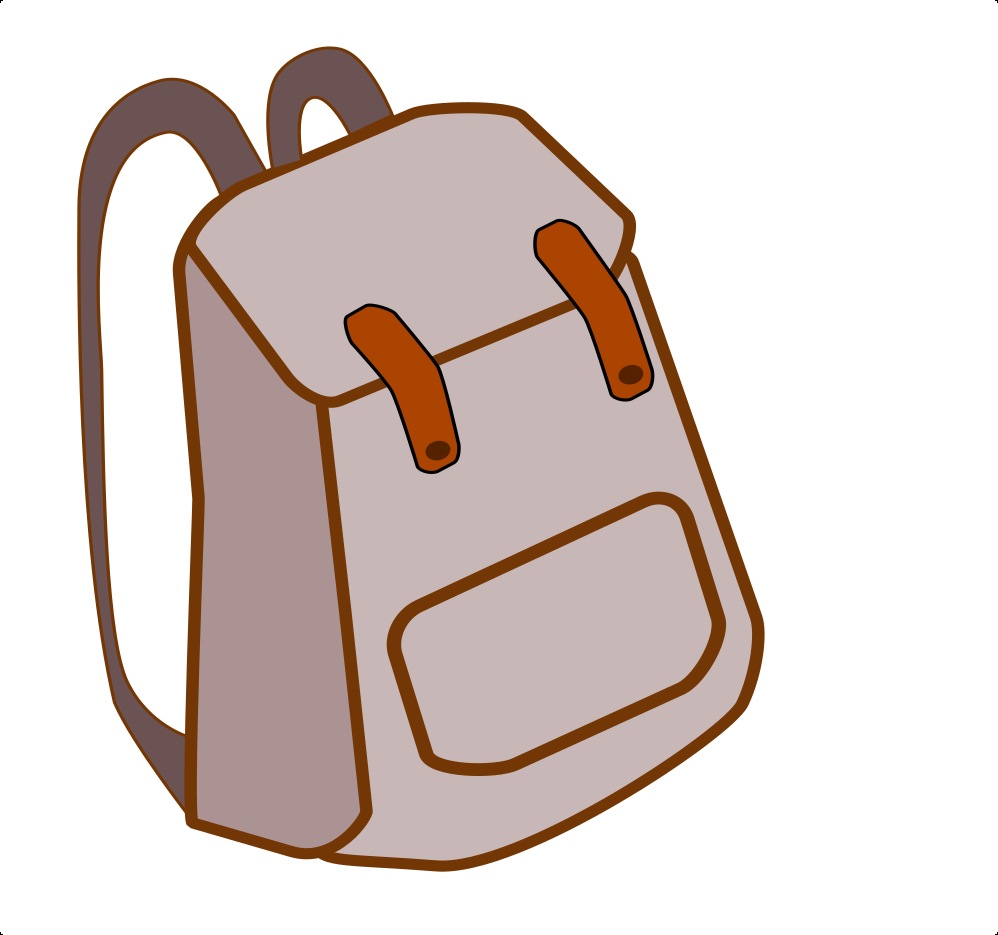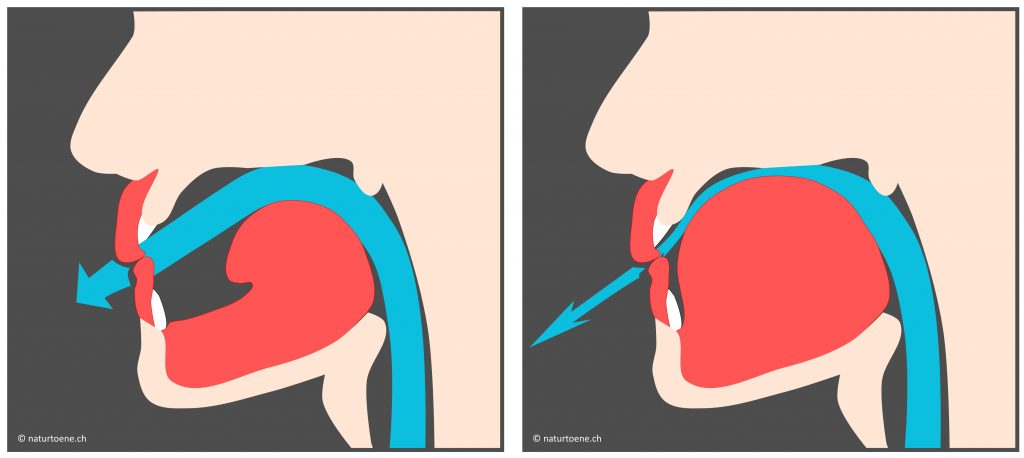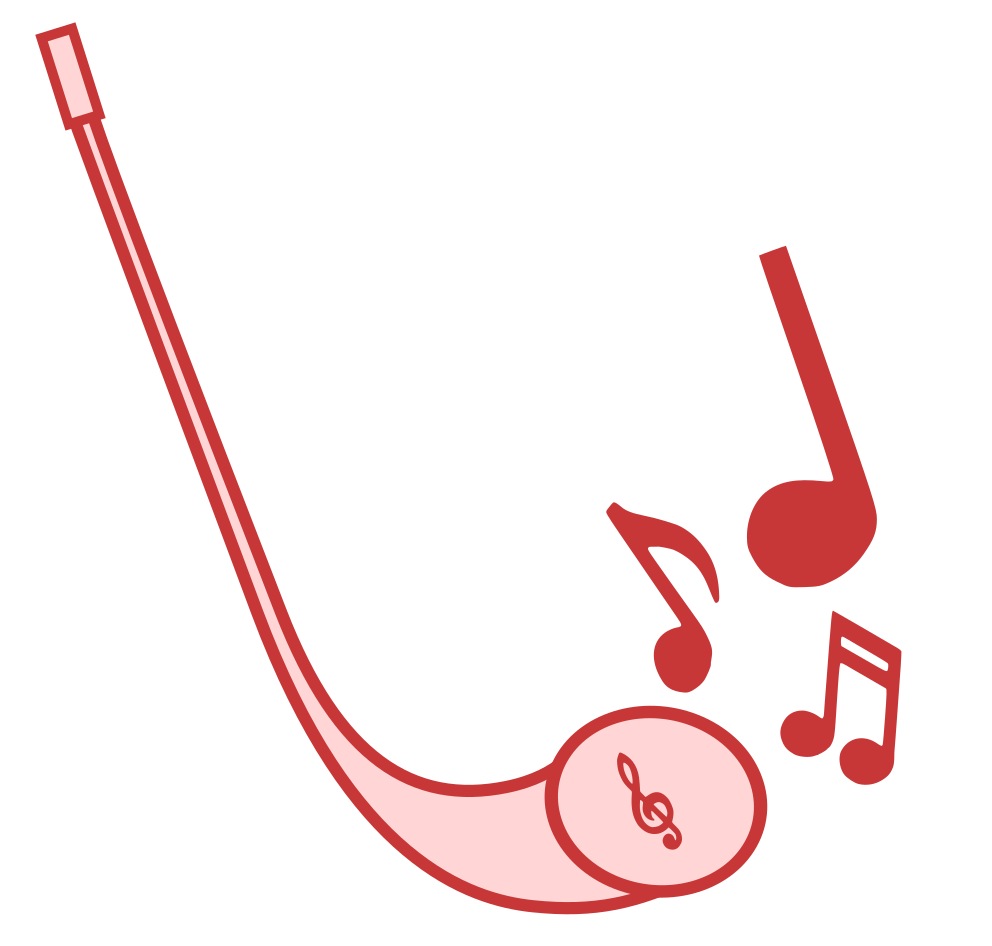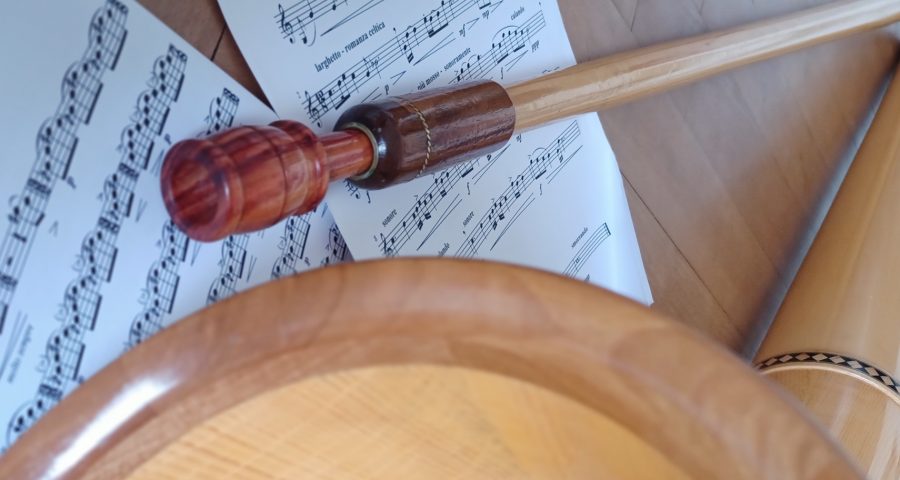In this lesson you will learn how to form the embouchure.
 Air and tension
Air and tension
Alphorn players are often asked how they generate the different notes. The correct answer is: “By controlling tongue and lips.” One could add: “…., whereby the tongue does 80% of the work.” A video from the tomograph as an illustration:
The tongue controls the speed of the airflow. The air passes from the lungs into the oral cavity and flows through the canal between the tongue and palate to your lips. The shape of the tongue changes the diameter of this canal. If you press the tongue against the roof of your mouth, the diameter decreases. Then the same thing happens as when you squeeze the end of a garden hose with your fingers, the water sprays far and wide. Because, as long as the volume (the air flow) is constant, the laws of physics – specifically the Bernoulli Principle – mean: large channel = small velocity; narrow channel = high speed. In the graphic you can see how the tongue (red) changes the air channel (blue) and thus the air speed.

In Lesson 2, you learned that by buzzing your lips generate vibrations. For this to happen, you need an appropriate amount of tension. Think of a blade of grass or a strip of paper that you can make hum by blowing on it while pulling it. The faster the air flows, the more tension is required. On the alphorn, the lips change the tension, but (almost) do not move.
- Deep tones = the tongue is far back in the mouth (wide canal) + soft lip tension
- High tones = the tongue arches against the palate (narrow canal) + tight lip tension
- All tones = lots of air!
 Forming an Embouchure
Forming an Embouchure
Tension is a prerequisite for your lips to vibrate. In order to generate tension, opposing forces are required. You have to mobilize three forces when forming your embouchure:

Compress: Put your front teeth together (no wedging). Then close your lips so that your teeth are covered. Press them together lightly, but don’t fold them inwards.

Slip in: Put the mouthpiece on your lips and form a tight seal without pressure – try to slip your lips into the mouthpiece. The mouthpiece lies on your lips so that its upper edge extends just above the upper lip. Your lip muscles push the mouthpiece away from your teeth. The mouthpiece lies on your lips so that its upper edge extends just beyond the upper lip; about 2/3 of the mouthpiece surface lies on the upper lips.

Pull apart: Tension and tighten your lips with counter pressure. Pull the upper and lower jaw apart without changing the connection between your lips and the ring of the mouthpiece. Open a narrow gap between the rows of teeth. Create a controllable passage for air in the mouthpiece.
Viewed from the side, the embouchure looks like the graphic below. Ideally, your rows of teeth should lie on top of each other and the mouthpiece should rest on this flat surface at a right angle – to do this, you need to bend your head forward at the same angle as the alphorn and possibly push your lower jaw forward slightly.

The embouchure built up in this way is your stable framework. When you take a breath, keep the alphorn on your lips. To do this, open your lips to the side of the mouthpiece or breathe through your nose. Some alphorn players build the embouchure first and then take a breath; others take a breath for the first few notes before forming the embouchure. Most players also play “wet” – they wet their lips briefly with the tip of their tongue before blowing. Even then, the embouchure remains unchanged – you can see this well in the video above. Only at the next longer pause, if your muscles begin to weaken, do you take the instrument away from the embouchure.
Be prepared that it will take several years before your embouchure is strong and stable. This is because you need to use muscles that you otherwise never consciously control. The best strategy aims for gradual improvements: keep playing with the approach that you intuitively formed while buzzing. Try to consciously perceive the three forces described above: How do you press your lips together? Have your lips slipped into the mouthpiece? Can you change the size of the opening? How does the embouchure feel when you keep the mouthpiece on your lips after playing a phrase? What do your lips do when you take a breath between two phrases? In particular, make sure that you keep the embouchure as stable as possible when changing notes – only the lip tension should adapt to the pitch. Over time, you develop more control over your fine motor skills and can continuously improve your approach. You might also find a mirror and a buzzing ring to help you as a visual aid. And yes, it is particularly worth getting professional feedback on your embouchure.
A lack of strength and endurance is often the limiting factor for beginners. You can accelerate muscle growth by body building for the lips. From my own experience I can recommend the P.E.T.E. embouchure trainer by Warburton (here is a video by Mark Zauss, and here is Warburten’s instructions for use); others prefer the Jericho lip expander. You may also simply use a pencil: hold it with your lips while you pull on it. As a positive side effect, body building automatically improves your feel for the muscles involved. But never forget that the key condition for a strong and clear sound is not the power of your lips but rather the flexibility of your tongue.
Two things to avoid:
- Pressing: Of course tension increases when you press your alphorn against your lips,. You might even gain some height in the short term. But the side effects are toxic: you train your hands instead of your lips, you choke off circulation and can permanently damage your muscles, you lose mobility, your tone sounds awful. So no pressing while practicing! (If you are exhausted playing in front of an audience, pressing to avoid embarrassment is exceptionally permitted).
- Pulling the corners of the mouth apart: The everyday understanding of lip tension is a wide grin. You have trained this mechanism since childhood and may therefore unconsciously do the same while playing the alphorn. But there it gets in the way, because you don’t get precise control over the lips in the narrow area of the mouthpiece if you stretch them across their entire width. Check in the mirror from time to time to see whether the corners of your mouth move back in the high notes. If so, get rid of it!
![]() Further information
Further information
- In this video, trumpet player Charlie Porter shows in detail how he forms the embouchure – in line with the method presented in the text above. This video shows the embouchures of various brass players in action.
- Kees H. Woldendorp, Hans Boschma, Anne M. Boonstra, Hans J. Arendzen, and Michiel F. Reneman (2016). Fundamentals of Embouchure in Brass Players: Towards a Definition and Clinical Assessment. A very informative scientific paper on physical, physiological and psychological aspects of embouchure forming.
- Here my blog post on lip training.
 Warm-up
Warm-up
Objective: Find out which warm technique works for you.
Opinions differ on the question of warming-up. Here is a list of different methods. Try each of these for a few days. Pay attention to how your exercises succeed afterwards: How concentrated are you? How is your body feeling? How does your alphorn sound? How do the tones respond and how do the transitions succeed? Then decide which warm-up technique works best for you:
- Slow and low. This is the warm-up exercise traditionally practiced with the alphorn. Take 5-10 minutes. Play long, sustained tones; then slow ties. Start in the low register and work your way up in small increments; but don’t go beyond C4 for now. Pay attention to clean sound. This method has the advantage of “grounding” you – e.g. after a hard day’s work – and promotes a relaxed, voluminous sound. However, your body is also put into the comfort zone right from the start, from which it is very reluctant to emerge again afterwards.
- Buzzing. You can also start your daily practice session with 3-5 minutes of buzzing. This loosens the lip and face muscles and develops a feeling for the embouchure. As a distillate of the method, you can buzz once over your entire pitch range (see here). However, some have trouble getting started directly on the instrument after buzzing.
- Didgeridoo. A warm-up on the didge promotes lightness and is very effective in stressful situations. Franz Schüssele uses the alperidoo (alphorn without hand pipe, but a didge mouthpiece). In essence, a variation of buzzing.
- Scales and glissandi. My preferred method; actually nothing else than buzzing directly on the instrument. I play scales for 2-3 minutes. I play up quickly, but without pressing the high notes (as soon as a note doesn’t start, I start again at the bottom). Also well suited are arcs of notes that keep ascending: c’-e’-c’, c’-e’-g’-e’-c’, c’-e’-g’-b’-g’-e’-c’ ….In this way I open up my range in a very time-efficient manner and catapult myself into a state of high attention. For some, this approach is too much “from zero to 100”.
- Jump in. If you start directly with your normal training, without warm-up exercises, the warm-up happens almost implicitly as part of the practice. This is the most radical method. Obviously, like this you don’t lose valuable practice time. However, it requires you to concentrate immediately and to react correctively (sound, ease, …).
As with the warm-up, there are different opinions about the optimal conclusion of the daily exercise. Some suggest a cool-down as in sports – a few minutes of relaxed playing in the lower registers. Massaging the facial muscles (with lukewarm water or an oily cream for the lips such as Trompetol) also supports regeneration.
 Soft lips
Soft lips
Objective: Try different techniques for gentle lip pressure.
Excessive pressure is not the answer, but playing without any lip pressure doesn’t work either. Everyone needs a little bit of pressure, especially in the higher registers. There are no general rules as to where to draw the line between appropriate and excessive lip pressure. But there are clues: How do your lips feel after an intense practice session? If your whole mouth area feels exhausted, like your legs after a marathon, then it’s good – you’ve trained your muscles. If the lips are numb and painful in the area of the visible mouthpiece impression, then you have pressed too hard. Another sign is cold sores; while there are many other factors at play, frequent cold sore episodes can be a result of high lip pressure.
There are a number of ways to get used to gentle lip pressure.
- A cramped grip inevitably leads to high contact pressure. Therefore, when practicing, control from time to time your arm muscles and/or hold the alphorn gently with two fingers.
- If this is not enough: place the alphorn on the top of your index finger. To resistance from the alphorn foot, place it on a slippery surface (e.g. loose leaves). If you have a carbon alphorn, you can also put the cup in the water (lake, bathtub…).
- Use a watering can alphorn or a flexible hose to practise. If you hold the hose about 30cm from the mouthpiece, it will simply be impossible to apply too much pressure.
- Trumpet players sometimes hang the instrument from the ceiling. A bit of a hassle with the alphorn, but could be worth a try. Here is a skeptical video about it.
- There are also specific tools, such as the Arnolds & Son adapter or the luxurious Stratos spacer. Before making such an investment, however, I would first discuss the subject with a competent teacher.
 Legato
Legato
Objective: You improve the coordination of tongue and lips.
So far you have practiced by blowing on each tone individually. Another possibility is to slur notes. To do this, you change the shape of your tongue while the air continues to flow uninterruptedly.
Usually, beginners find it more difficult to slur notes rather than to blow on each note. That’s because since your early childhood you’ve been optimizing your muscles for speaking; you call up the internalized mechanisms intuitively. When tying notes, on the other hand, your tongue has to get used to unfamiliar movements while you need to keep the lips stable at the same time. But it is precisely this fine control of the tongue and lips that helps you develop a clean blowing technique. In order to work on your tongue control, proceed as follows:
- Use the same material as before – i.e. keep practicing with the material of the previous lesson. Simply tie all notes as if everything had been notated legato /slurred.
- Spend at least half of your daily practice session on playing legato.
- Pay attention to precision! You must learn to precisely control the moment when the note changes. Practice slowly and with a metronome. Make sure that the tone changes precisely with the beat of the metronome. Only increase the speed in small steps – precision remains more important than speed.
- Pay attention to efficiency! The change in pitch should be done with the tongue alone, while the embouchure remains as stable as possible. The air should keep flowing steadily. Make sure you don’t use other muscles to help – check yourself in the mirror from time to time while you play (or film yourself).
- In lesson 8 you will return to the topic of lip control in more detail.
